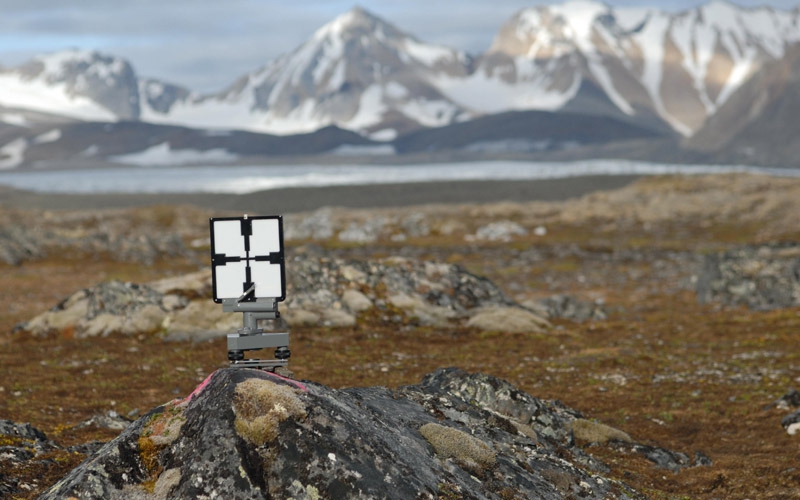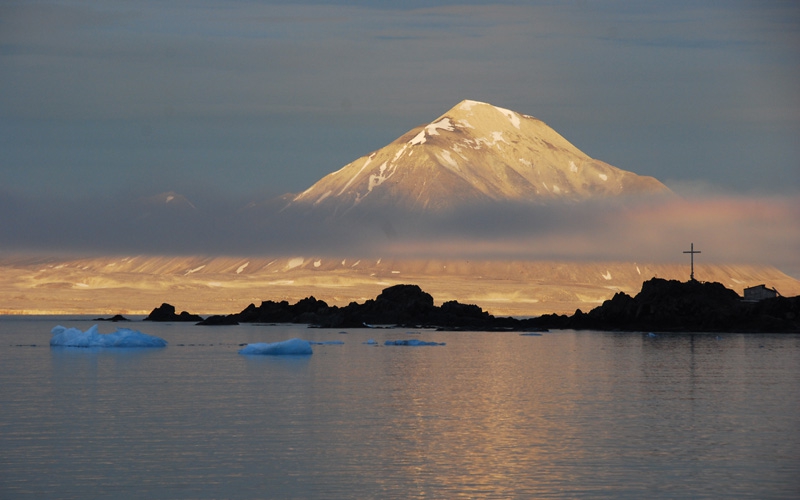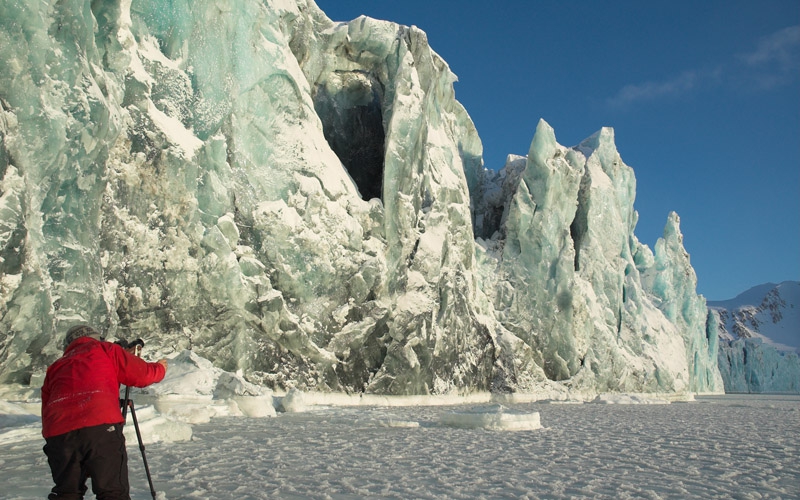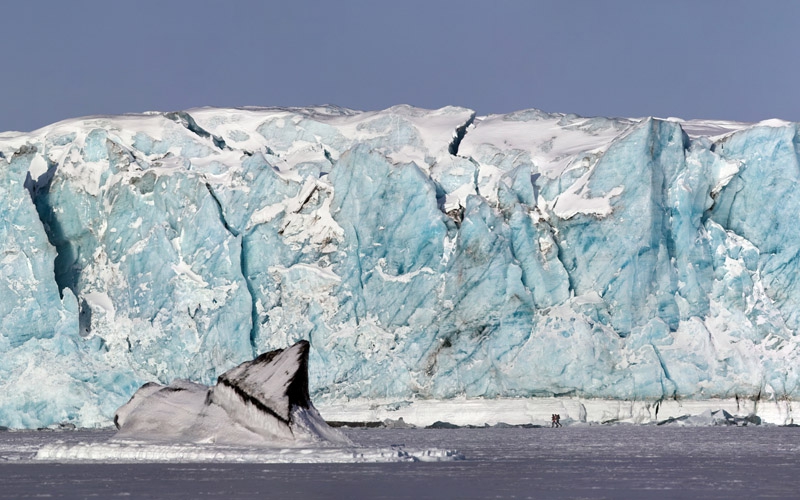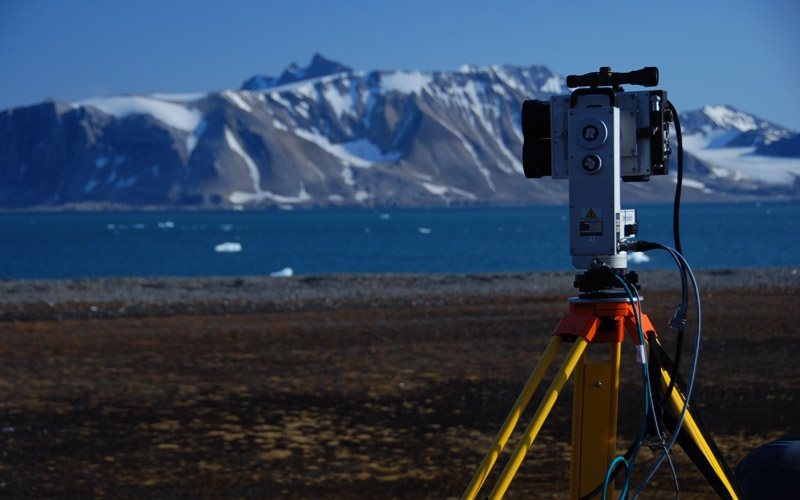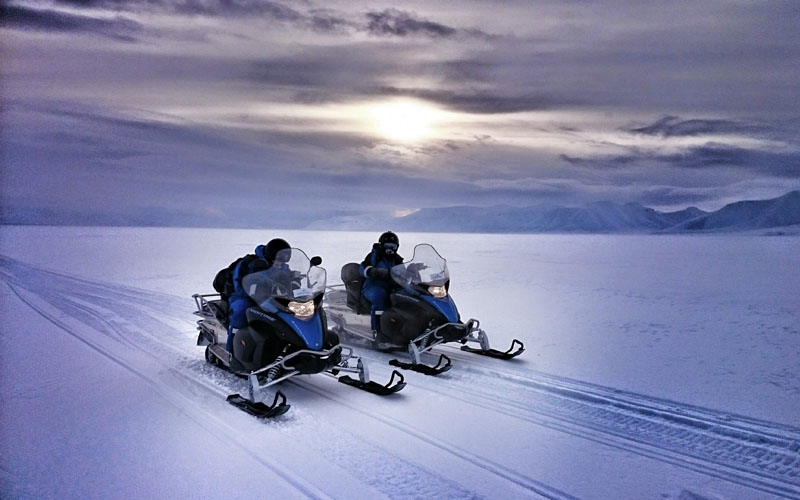Polar research
Polar research
Polar Research – a Hobby Activity.
The history of Polish polar research on the island of Spitsbergen dates back to 1934 when officers of the Military Geographic Institute took part in a pioneer expedition.
The Polish Polar Station, belonging to the Institute of Geophysics of the Polish Academy of Sciences, has operated permanently there since the 80s. This has opened up new opportunities for continuous year-round research and the surveyed Hans Glacier is considered to be the best monitored glacier in the Arctic.
In 2002 the Polish Club of Land Surveying Students was set up at the Association of Polish Surveyors and as a result of that a group of keen enthusiasts from among the students joined this work related to polar measurements. Artur Adamek, a student of the Warsaw University of Technology, became the first president of the Club. His active participation in Arctic research, as part of cooperation with the national science centers, began in 2003 and has continued until now.
Modern expeditions, which carry out their work under extreme Arctic conditions, have not only expanded the scope of research, but have also included in measurements new areas of Spitsbergen.
Main goals of expeditions:
- Track the dynamics of the Hans Glacier,
- Conduct geodynamical research around the Hornsund Fjord – measurements in the geodynamic test field established 15 years earlier in order to identify potential movements of the tectonic plates.
Additional topics included in land surveying work:
- Study of the dynamics of the adjacent glaciers;
- Study of permafrost;
- Study of settlement of engineering structures;
- Preparation of a topographic map for the area of the Hornsund Station;
- A range of analyses of observation results from a permanent GPS station;
- Mapping of glacier drainage systems (ice caves).
Glaciological Research
Polar areas are the most sensitive zones of our planet. They are said to be weather’s “breeding grounds”. Symptoms of global climate change and traces of environmental degradation are also visible earliest here. Land surveyors have an undeniable contribution to the ongoing discussion on the condition of our planet. Such a broad scope of interdisciplinary research allows changes taking place in the Arctic to be observed and thus to determine predictions of the world’s climate.
The determination of the dynamics of a glacier is important information to evaluate its ablation and accumulation balance. The rate of ice movement is different for each glacier. Moreover, this movement varies within the glacier tongue itself and undergoes diurnal, seasonal and long-term changes over time. Ice movement is also one of the factors that determine the dynamics of glacial and geomorphological processes.
Comprehensive research on the Hans Glacier has been conducted for many years. The measurements of ablation poles, which have been made since 2000, allow us, among others, to analyze the movement of the glacier along its longitudinal profile and many other processes taking place on its surface and within its structure. In 2004 all the poles were measured for the first time using the GPS RTK method. This was undoubtedly a pioneer and far-reaching project. The obtained results were a continuation of the previous measurements and provided more specific details. This project opened a new era in the approach to polar measurements.
The stereoscopic photogrammetric measurements of the dynamics of the Hans Glacier carried out over many years clearly show that this glacier is regressing. Its melting rate has increased over the recent years and is about 60m per year. It should be additionally noted that the behavior of this glacier is typical of most of the Spitsbergen glaciers and confirms the trend observed for almost one hundred years. Therefore, we can speak of a large recession within the entire microregion. These facts clearly demonstrate that the climate of our planet is getting warmer.
In polar research, the continuity of long-term and year-round observations is most important. Artur Adamek has had an active contribution to these observations for many years.
Polar Engineering
The conditions on Spitsbergen are predominantly determined by permafrost that reaches a depth of more than 600m, but its surface layer thaws during the summer period. Some additional factors include the following: polar night, dry air, low temperatures, and exceptionally high variability in weather conditions. They have a significant impact on the safety of people living there. Systematic monitoring of the movements of the building structures founded in the active layer of permafrost is an indispensable element of living in these areas.
Systematic monitoring covers:
- the footings of building structures and technical infrastructure,
- fuel pipelines and other transmission networks founded on soil.
For cognitive purposes, the permafrost itself is regularly measured. This research is based on three test fields: dry and wet tundra as well as tundra edges. The permafrost surface is delicate matter that requires non-invasive methods for measuring its deformations. After conducting a test study, terrestrial laser scanning was selected as the most advantageous method in terms of the quantity and quality of observations obtained as well as in terms of measurement non-invasiveness.
Visit our profile at Google+
Add us to favorites and keep to date with the last news


